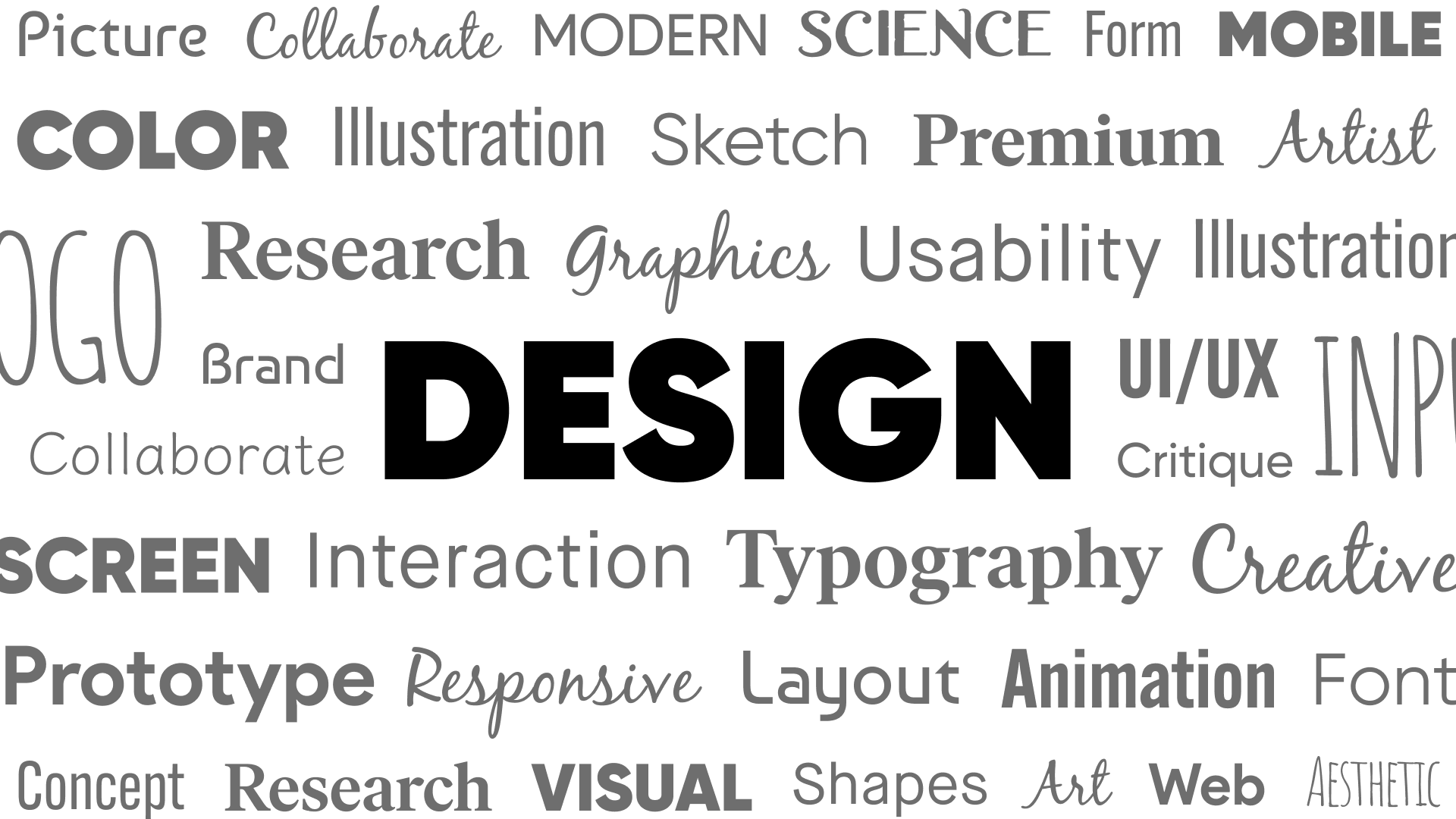Design Defined: Unraveling the Confusion in Software Organizations
Design is an important business function, but many people still don't understand it.

As someone who didn't go to any formal design school it took me close to 6 years of being a professional designer before I even questioned what design actually was. The first jobs I took were generic "designer" jobs for startups where it was my job to wear as many hats as possible and I never questioned the tasks assigned to me. UX/UI design, marketing materials for magazines and posters, building and maintaining marketing websites, and creating logos and brand guidelines were all things I was asked to do.
It wasn't until building the team at Runkeeper that I realized that many of these tasks were ultimately very different roles and while I was pretty good at several of them, I wasn't really great at any of them. If we wanted to be great at design I needed to find people who were great at the different roles, and I couldn't expect people to be great at several roles at once. I needed to better understand the different types of roles and skillsets out there, how they worked together, and how to give those designers the proper guardrails and support for them to thrive.
Years later, this is still a common phenomenon I experience at companies I work with. Designers get hired to do some version of "design things" and even if everyone in the situation feels confident that they are all on the same page, often times they are not because their idea of what a designer is and what they should be great at differ significantly.
If you aim to make design a priority in your organization, you need to start by being clear about what design is. Let's take a look at the key reasons why design is misunderstood, and how I believe it should be viewed going forward.
Everyone is responsible for the user experience, not just the user experience designer.
A great user experience (UX) includes the application's performance and stability, whether or not a marketing campaign spoke to them, and even if support issues are resolved promptly and efficiently. However a UX designer often has little to no say in any of those elements.
What a UX designer is typically focused on is what elements are needed for the user to interact with a feature properly. This is better described as something like interaction design, but since it often also includes things like visual design or even research or code in some cases, the generic "UX Designer" term gets used.
While it may seem like the roles are obvious to all involved, don't be surprised if there is confusion about who is responsible for what based on the hidden meanings of words like this.
Design is just "how it looks"... right?
When I've asked friends and colleagues how they would define "design" the answers varied greatly, but the phrase "how it looks" was most commonly used. This is largely confirmed in many of the published definitions of "design" or "designer," often with an emphasis on creating a specific visual or artifact. People often gravitate to something visual so it would make sense that many people's perception of design is just the thing they can see, and not all of the other stuff that lead to that point.
The truth is, there are MANY roles and skillsets that are involved in the process leading up to the creation of actual visual elements, and many times these roles are not even recognized let alone understood.
Some of the most common roles designers are asked to play in a software company (and how I define them) include:
UX/Interaction designer - responsible for designing the functional elements of a user interface, sometimes working in low fidelity and performing research to validate the proposed solution.
UI/Visual designer - responsible for turning the functional design into the high fidelity version that will get built and shipped and maintaining a consistent look and feel throughout the application or feature.
Product designer - Responsible for the big picture, making sure patterns are consistent across the elements of the app and the separate features work together seamlessly in a consistent and cohesive experience.
Graphic/Marketing designer - Responsible for marketing materials, landing pages, or advertisements that are typically less constrained and more artistic in nature.
And beyond the common roles, some other skillsets that designers are often expected to possess but are specialities all their own: research and customer development, illustration, animation, photography, videography, creative direction, brand design, hardware design, game design, audio design/music production, iconography, typography, prototyping, and even some level of development.
There is a lot of overlap between those common roles and in many cases a "UX Designer" is actually expected to be able to excel at all of those roles. In some cases some of those additional roles are also assumed just part of what a designer does. The problem is, designers are rarely great at more than one of these roles, even if sometimes they are pretty good at some of the others.
Understanding the roles involved in design is a big piece of understanding what design really is, and where it should begin and end for your organization.
Design/User Experience Outcomes Aren't As Easy To Measure
"Not everything that can be counted counts and not everything that counts can be counted" - Albert Einstein
Sadly, in the business world (and even in society) we tend to value only what we can measure even though some of the most valuable things can't be measured reliably. This is true with design more than any other area of a business, and I believe it's a big reason why people have difficulty understanding what design actually is, and what impact it has.
If the marketing team launches a campaign, it's pretty clear how to measure the impact of that campaign. If the development team is tasked with shipping a feature with specific acceptance criteria by a certain date, it's clear whether or not they were successful in their task. Support may measure their effectiveness using customer reviews of their support experiences, number of tickets closed per hour, or even a reduction in overall number of tickets.
But how do you reliably measure the impact of choosing a certain typeface over another? Whether or not the animation you want to add to the buttons is worth the additional development time? If a you should use illustrations or photography as your primary visual elements?
It's next to impossible, and it makes it easy to ignore or dismiss design as something that isn't worth taking the time to understand.
So then what is "design", and how do we properly support it in our organization
Because of it's unclear and often undefined nature, design is often reduced to something you either get or you don't. This leads to exclusion and frustration where designers often feel like their work isn't valued or taken seriously by people who just don't "get it", and non-designers often feel like they are just being asked to do things that don't matter because the designer or design team has difficulty explaining or justifying things that are difficult to explain or justify.
I believe Frank Nuovo said it best.
"Design in its simplest form is the activity of creating solutions. Design is something that everyone does every day."
Design needs to be more inclusive and inviting, because everyone is a "designer" in some way. The design team needs to be more explicit in defining the goal they are trying to optimize for with their designs, more transparent with designs that are in progress, and more open to critique and feedback.
On the flip side, non-designers need to trust that design team has good reason to propose changes or design things in a certain way.If they take the time to understand the design process they can learn how to critique and communicate effectively so that they can participate in creating the best user experience in a collaborative way.
Magic happens when the walls are torn down, and everyone has the same shared understanding of what the goal is and whether or not a design is solving for that goal and being implemented in the most efficient way possible. People are then able to use their unique area of expertise to build together towards a common goal.
As for the function of design in an organization, here are my recommendations for how to support and invest in design properly.
Inspire everyone to think like a user experience designer
At the end of the day while most people focus on the job description for their specific role, the underlying function of anyone on the team is to use their unique skillsets to produce the best results for the business (often times this is summed up by saying "help the company make money" but not always). The best results for the business come from creating an incredible user experience and, as I mentioned above, that is something everyone is designing in their own way. Empower the team to view their work as designing the best user experience, and it will start to break down the walls with design.
Be clear about the roles and skillsets you have and need (and make sure your designers are equally clear)
The two most common job titles I see these days are some level of "UX designer" (sometimes UX/UI designer), and "product designer." While it may be a requirement to name these roles as such to attract the proper talent, and it may be better to have a more generic title than something more specific, this can be an expectation setting nightmare since SO many different types of design could be expected of either title. Make sure you hire people who are strong in the areas where the other designers are weak, build a process that plays to each person's strengths, and be willing to contract out for the skills where you lack greatness in house.
Make design a priority at the cultural level
While every attempt should be made to explain design decisions and be clear about the goals driving them, at the end of the day you have to believe that design is important if you are ever to be great at it as a company. If resources are doled out based on proven track record of ROI, design will be under-funded almost every time. It's not a coincidence that almost every single one of the products you enjoy are considered to have great design, so it shouldn't be a hard sell to make the case that design is important, even if not many truly understand what it takes.
Thanks for reading! If you liked what you read, please consider subscribing and sharing with others who may find it useful. As always if you have questions or other feedback please reach out or discuss in the comments below.

